Unpretentious and enduring garden culture - hazelnuk, it can be easily raised on its homely area. The main advantages of this shrub is: rapid growth, high yield and longevity.
Sustainable for diseases and is not demanding to special cultivation conditions, the hazelnut has valuable fruits - delicious and very useful nuts.
On how to independently grow the hazelnut on the site and get the long-awaited harvest, it will be discussed in this article. In addition, considerable moments will be considered: the choice of a suitable grade of the hazelnut, the correct selection of seedlings when buying, methods of breeding the shrub and many others.
After reviewing the healing properties of the nut, each gardener, if there is a free place, will certainly want to have a shrub in the arsenal of his favorite garden crops.
Hazelnut, description
The alignment shape of the flavory - hazelnut, belongs to the genus (Corylus) of the birch family. In culture, the species is known for about 2000 years, the coast of the Black and Mediterranean seas is considered an area of \u200b\u200borigin. Even the name "Funduk" comes from the Greek word "Pontikos", which means "from the Black Sea".
This long-term rustic shrub grows in a height of up to 3 - 5 m, depending on the variety and artificial formation of the crown. Leaves - oval or heart-shaped shape, dark green. In the fall, they acquire a bright color of yellow-red tones, which gives them a very attractive decorative appearance.
The hazelnut is a plant with separation flowers. Men's inflorescences can be seen on the shrub of early spring, they resemble the margins-hanging. Women's inflorescences, on the contrary, look unbelievable, no difference from ordinary growth kidneys. The blossom of the shrub begins early (as a rule, in March), before the appearance of leaves, as soon as the temperature mode is mounted on average up to 12 ° C. Due to the fact that women's and male inflorescences do not bloom at the same time, there is a risk of productive self-pollen of the plant. Therefore, to be confident in the future crop, it is necessary to land several mutually pollinated grades, if possible, at least 10 copies. Pollination of some varieties is also carried out by the wind (crossroads) and with the help of insects.
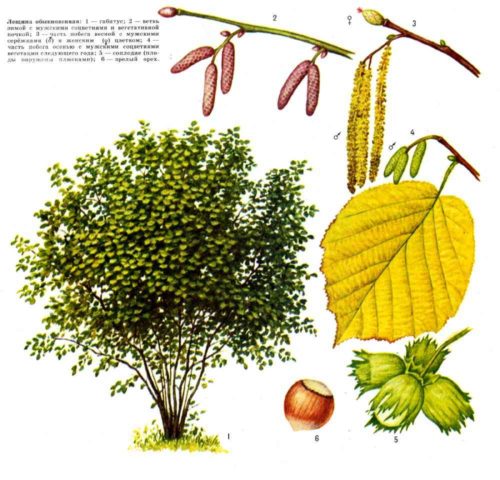
The festy of hazelnut is represented by a nut in a solid wood shell, a leaf plumin wrapped, maturing to autumn. The nucleoline nut has two fleshy cotyledoli, covered with a shell that easily lisches.
In the vegetative reproduction, the hazelnut enters the phase of fruction for the 3-4th year. The greatest yarns shrub gives aged 10 - 35 years, which is, on average, from one bush from 5 to 10 kg. Hazelnuk is a famous long-lived living up to 100 or more years.
The value and nutritional nutability is explained by the composition of its contents: 60-70% are fats, 15-20% are in proteins, and 6-10% - for carbohydrates. Glycerides oleinova, stearinovoy, palmitic acids containing in the hazelnut, have healing drug properties. These esters are able to reduce the amount of cholesterol in the blood, prevent the development of vascular diseases, strengthen the immune system. The presence of vitamins of group A, B, C, D, E, as well as many chemical elements allows you to widely use the harshs of the hazelnut in the food industry as a valuable nutrient element.
The plant quickly quickly generates a powerful root system, which allows it even on the lowest and poor soils to grow perfectly and fruit. The hazelnuts are successfully grown in almost all soil-climatic zones. Such universality could not not attract breeders.

Funduka varieties
The hazelnut has many fertile and stable varieties. Some of them are widely used in industrial landings, others are valued for magnificent decorative properties. You can grow a hazelnut and independently in your garden.
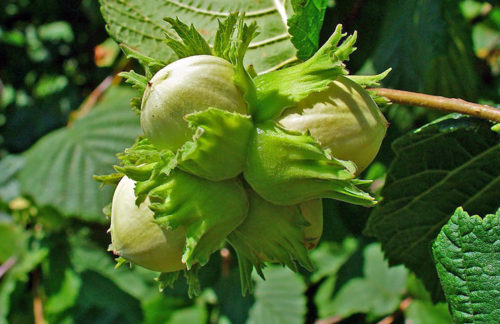
Consider the most popular varieties.
- Hazelnuk "Barcelona"
Shrub is characterized by a thick and wax form, up to 5 m high. The leaves are quite large, saturated green, and the upper part of the sheet plate is painted darker than the bottom. Leaves are slightly covered with small vills. It has average blossoms.
The variety is hardy, frost-resistant and distinguished by high yield. Nuts are large (25 x 20 mm), different shapes, slightly flashed, with a spinged top. They have a thick shell, red-brown. The kernel of the nut is large, juicy and tasty. Nuts are matured very early, in early September.
This variety deserves widespread, the only drawback is a vulnerability to fungal disease - moniliosis.
The pollinators can be representatives of such varieties as Galle, a miracle from the Burnler, Lambert White, Davian.
- Hazelnuk "SPORDA"
English variety with a strongly growing bush with a thick and high crown. The leaves at the shrub of a dark green color, large in size, in the fall are becoming red. The time of flowering variety is early.
The grade is high-yielding, fruit pretty early, at the end of September. Walnut is a large, rounded and surround-shaped, covered with a thin shell. The core is juicy and tasty, with a yield of 54% of the total weight and oiliness of about 62%.
The variety is medium straightened, prefers warm microclimate and secluded, protected from winds, places. Suitable for growing in its own garden.
Successfully pollinated by Galle and Lambert's variety.
- Hazelnuk "Galle"
German strongly growing variety, reaches up to 5.5 m. The bush forms a large crown of medium density. The period of flowering is an average early.
Large nuts (28x25), cone-shaped C, ovoid shape, a core, covered with a rather coarse shell, which is easily separated.
Fruits ripen later than previous varieties in late September - early October. It is not worth a hurry to collect a crop so that the nuts do not lose weight and have not lost their taste.
This variety is one of the most damned, fruiting regularly and in large quantities. At the same time, he prefers fertile soil and warm climate. Passed with such varieties like Barcelona, \u200b\u200bCornflow, early long.
- Hazelnuk "Warsaw Red"
European grade is distinguished by a gravy shrub, spherical shape. Nuts of large sizes, with pleasant sweet taste. Fruits ripen in the second half of September.
It is considered a decorative grade having red leaves in the autumn period and green - in summer. The yield of the nucleus is 48 - 51%, the presence of fats of about 70%, proteins of 14%, carbohydrates 8%. The kernel of the walnut has a light thin skin, gentle, sweetish taste. The flowering time for men and female inflorescences almost coincides. As an additional pollinator, Galle variety is suitable.
- Hazelnuk "Trapezund"
Crimean highest grade, meets all the requirements of the State Standards. Nuts of large size, ripening very early (at the end of August), with high fat content (up to 72%). The greatest view of the hazelnut, with the core at the exit of 60%. Moderately frost-resistant grade, withstands the temperature to -32 ° C, is characterized by a high yield.
- Hazelnuk "Red Color"
Includes a whole group of varieties, a distinctive feature of which is the leaves of carminous shades. A characteristic feature of the group is an increased frost resistance, allowing to carry even very harsh winters. And the high yields of nuts and unpretentiousness in the care (meager soil, lack of moisture) made him a pet for many gardeners.
Such shrubs are actively used in decorative purposes. An artificial bright hedge gives the site a unique appearance.
The most famous varieties: Catherine, Academician of Apple, Smolin, Kudifef, Moscow Ruby.
In addition to these species, there is still a mass of hazelnuts recommended for cultivation. These include: Circassian, Kudryavik, Kerasund, Palace, Badhem, Lombard, Ata Baba, Yaglu, Panachin, Cadette and others.

Funduka landing
Given the unpretentiousness and endurance of many grades of the hazelnut, growing a shrub on its plot will be easy. A, knowing the peculiarities of growing and optimal conditions for planting, the process will seem simple and fascinating. The result, in the form of delicious nuts, in a few years it will delight your abundance.
Selection of places for landing
- Taking into account that the adult plant is a hazelnut - highly growing, spread and thick durable shrub, you must initially choose spacious, open and well lit place. The hazelnut preferences protected from through winds, solar places. Maximum shrub lighting significantly increases its yield.
- TO soils The hazelnut is unpretentious and grows almost everywhere, with the exception of dry sand, wetlands and saline soil types. Naturally, on fertile soils, with good moisture, it will develop better and give the greatest crops. The optimal will be loose, rich in nutrients, with a neutral medium, soil. Sour soils must be previously known, taking 500 g of lime per 1 sq.m. Soil. When landing on chernozem soil, it is recommended to bring sand or peat to improve its moisture and air permeability. Cold, heavy and compacted soil The plant tolerates badly.
- Shrub cargo and grows as smooth areas and on the slopes. In Turkey, for example, hazelnut plantations are located in the foothills and on the slopes. On the contrary, possessing the surface root system, the shrub successfully strengthens the slopes. If the slopes are large, they must be additionally traced, equipping there the corresponding wells.
- Considering that the hazelnut is a moisture culture, you can choose places for landing near rivers or reservoirs. Even the use of an area with a high level of groundwater is allowed, due to the formation of a surface root system at the hazelnut. But, nevertheless, it is better that the landing site does not undergo spring floods, and waterit was not stuffed there.
Landing time
- The landing is better to carry out in the fall (approximately in October) in still warm and wet soil. This means that in the spring root Hazelnut system fully recovered and the shrub will be ready for further vegetation.
- You can land the hazelnuts also early in the spring, the main thing is to provide seedlings with sufficient moisture. Right, roots quickly spend stocks of winter moisture.
Agrotechnology landing
- When reproduction of the hazelnut, it is important to initially sort the seedlings into standard, suitable for landing and not standard in need of crevice. Moving seedlings from 1 to 3 years, it depends on their size. They are planted on mini bed with a distance of rods about 1 m and 20-30 cm in a row.
- The hazelnut grows for a long time in one place, the crown is growing more and more over time, so the distance between the seedlings should not be done less than 4-5 m, and the aisle is 5-6 m. The only exception is to land the shrub as a decorative hedge, then the distance reduces the distance up to 2-3 m.
- To increase yields, it is better to plant at least 3, multiple and intercourable shrubs on the site. In the case of large plantations, the 10 rows of hazelnut are planted with a wild leafing, promoting successful cross-pollination.
- The landing pit is preparing in advance (in 1-3 months), about 10 kg of humidity, 200 g of double superphosphate, 70 g of potassium sulphate, after which everything is mixed with earth in the pit.
- In the hole they make a small hollyk, according to which the roots of the seedlings are painted, then the bush is sprinkled and compacted. It is important that the root cervix is \u200b\u200bat the ground level or 2-3 cm above.
- Around the planted bush make a hole and are abundantly watered with water. To preserve moisture, the priority circles are better to climb sawdust, dry grass or peat. After a week, watering repeat.
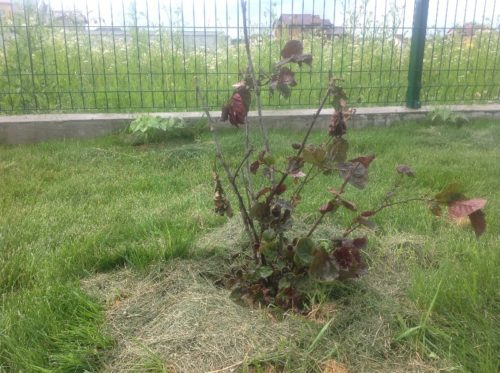
- For optimal rooting, the above-ground part of the seedling must be cut off, leaving about 20 cm from the soil surface.
- If the site is infected with a large number of larvae of the May beetle, before planting the hazelnut, it is necessary to carry out appropriate processing by chemicals. Another option: a year before landing to sow the buckwheat or lupine, which are destructive for larvae.
Placing the hazelnut on industrial plantations
There are several high-rise racks of hazelnuts: 6 x 6, 5 x 6, 4 x 6, 5 x 5 and 4 x 5 m. The larger the places under the shrub - the more powerful it will be in the future, and therefore it will be able to provide a large harvest.
Practice and the nesting form of planting that increases the yield of plants when the plants are planted around the circle.
In extensive plantations, varieties-pollinators are definitely located, placing them also according to a specific scheme.
Growing hazelnuts, care features
It is easy to grow this useful and valuable food culture, it suffices to comply with the basic rules of care and agrotechnology.
Loosening, wrestling
Like any other plant, the hazelnut loves loose soil, not scored by weed grass. Therefore, regular loosening around the trunk and timely removal of weeds are the necessary techniques of hazelnuts, especially during the formation of a young shrub from a seedling.
Considering that the root shrubs system lies close enough to the soil surface (from 10 to 20 cm), loosening or junk is carried out carefully, to a depth of 5-8 cm, so as not to damage the roots.
An adult fruiting plant will no longer be as susceptible to the absence of these agrotechnical events. The best option in this case will be the mulching of the soil (sawders, peat, dry grass), which will also prevent from weathered, washing and freezing the soil.
Watering
Hazelnut is a moisture culture, especially to take into account in the spring-summer period, when the reserves of soil moisture are depleted. Watering directly affects the yield of fruit culture, so drought can be allowed on the plot. Especially this rule concerns the summer period when there is a bookmark of the future harvest. Watering needs to be carried out depending on weather and climatic conditions. On average, with dry weather, the shrub is watered 1-2 times a month. Excellent results also gives drip irrigation.
It should be borne in mind that the oversupply of moisture negatively affects the plant, so it is important to ensure a good drainage of the site, especially after irrigation.
Fertilizer
The feeding is the necessary measure of culture care and depends on the quality of the soil. The form and dose of fertilizer directly depend on the degree of fertility of the site.
Annual application of organic fertilizers (15-20 liters of humus, manure, compost, wood ash) with a small amount of nitroammofoski (100-200 g) for each bush only improve the growth and fruiting of the hazelnuclear culture.
In June, when the fruit laying occurs, the plant feeds 0.5% urea or other mineral fertilizers. Organic feeding is made under the people.
In the case when the soil is fertile and well fertilized by a organic, nitrogen fertilizers should not be made. This may entail a rapid growth of shrub and, as a result, reducing yield. If the soil is scanty, the spring introduction of nitrogen fertilizers will have a positive effect on the development and fruiting of the shrub.
Fighting diseases and pests
Nuts - favorite delicacy for many large animals, so the shrubs can harm both boys and squirrels, and hares, and mice. From small pests, the most dangerous caterpillars, butterflies, beetles.
So, of the beetles, the leaves and nuts of the hazelnut often exposed to the attacks of the walnut weevil and the beetle Usach. The sign of damage is the early swallowing of nuts, their worm and the presence of dry escapes. To combat them, the plot is performed, cleaning damaged nuts and processing by pesticides.
Treatment is carried out in spring, when the beetles appear to prevent the egg laying. From mechanical methods, you can also periodically shake insects on the film, hiding under the shrub. Unfortunately, this method is very laborious and inffective.
Regarding diseases, the hazelnuk may be amazed by mildew, when a spider mold appears on the foliage, followed by black. In the case of infection, all the affected leaves are destroyed, and the plant is sprayed with a lime-sulfur solution, a colloidal gray or other fungicide. As you know: it is better to prevent the disease, rather than heal.
Therefore, in order to prevent the disease with mildewing, all those who fallen in the fall are harvested and destroyed, and the Earth is drunk. After all, this fungal infection is in the farthest foliage.
Formation of a bush, trimming
The proper formation of shrubs affects its growth, development and, accordingly, yield. Often, physiological processes such as an increase in winter-hardiness or resistance to diseases are also pruning.
Therefore, the correct trimming is an important link in the entire chain of agrotechnic techniques for the care of the hazelnut.
Allocate strambed and bush trimming. Task Trimming: Arrange a lightweight crown for larger air and light access, and stimulate the formation of young fruit branches. Conduct trimming in autumn or early spring.
For the decoration of the bush, unnecessary shoots are cut out in its middle and leave 8-10 main (so-called skeletal) stems. The formation of a shrub must be completed by the beginning of its fruiting (4-5 years).
It should also be borne in mind that after 3-4 years begins the active development of the stoveless shoots of shrub begins. If the entire appearing threshold is cutting - a trunk is formed like a tree. If you continue to form a shrub - cut out the cripples, and the young branches leave. The main thing is that the hazelnut is not too thick, with poor light access, and therefore a decrease in yield.
At the age of 15-20 years, the bush is rejuvenated, when the removal of 2-3-old stems produce, and young shoots are shortened. The essence of rejuvenation is to replace the old skeletal trunks with new, which appeared from the young row. The replacement can be carried out both gradually (for 6-7 years it is replaced with trunks) and one-time (all old trunks are immediately removed). Naturally, in the latter case, fruiting will temporarily stop and resume only a few years later.
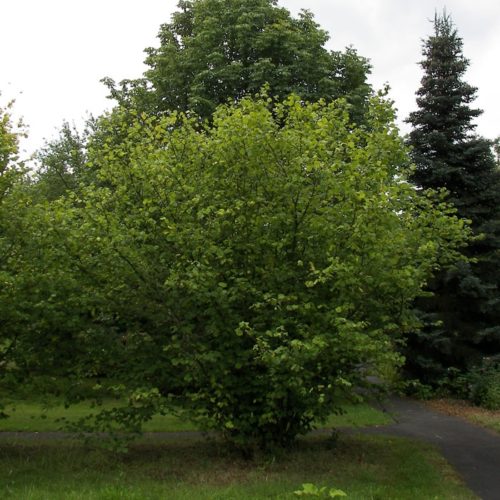
Shelter for winter
Only young seedlings need shelter for the first few years, and even then in the conditions of harsh not a snowy winter. To shoot no extinct, they can be burned to the ground and hide the bagnote.
Harvesting and storage
As a rule, hazelnut nuts begin to ripen autumn: the wrapper becomes golden brown and the nut is easily removed from it. Collecting the harvest, it needs to dry well, spreading a thin layer (you can in the sun or in a ventilated room). After that, to remove, where the leaf wrapper remained, and dry out the peeled nuts again. The fruits of the hazelnut in bags or drawers in a dry place under 3 years old are stored.
Funduka reproduction
The hazelnut breeds seeds and vegetatively, and different varieties multiply in different ways.
Vegetative breeding method
- Reproduction of the division of the bush
This is a fairly simple way to maintain all the varieties. The dried bush is divided into pieces with full roots and cropped (up to 15 cm) shoots. Prepared parts are sled to a permanent place. With proper care, the hazelnut knows good, restores the crown and begins to be fron in 3-4 years.
- The reproduction of rhizopy pigs
In about the 3rd year of life, the hazelnuk forms a piggy that is separated by an ax. When transplanting the strokes, it is necessary to make special cuts that provide better survival rate.
- Reproduction with a meadow
Use young annual shoots that are flexing to the soil, in specially dug grooves, fixing with special hooks. The shoots are sprinkled and watered. When the gods are rooted, it can be separated from the maternal bush. Very time-consuming and low-efficient way.
- Reproduction by chains
Reproduction is carried out with horizontal or vertical chain. About 5 chains are obtained from one escape. This method of reproduction of the shrub is considered quite time consuming, but effective. The laying of the chapels spend early spring.
Annual grooves are laid in the groove horizontally, they pinch them, and do not sprinkle. On such horizontally laid shoots, young vertical shoots will germinate from the kidneys. In the summer, when the sprouted shoots reach 10-15 cm, they are plunged with soil by one third of their heights and provide abundant irrigation. The increase is shortened to 0.5 m for the purpose of better root formation. The next year, we need to dig and divide the decodes with the resulting roots.
Vertical discharges are obtained as a result of dipping 1-2-year-old slips, making additionally carrying out wires. This is how the rooting of the jets, which will be reached by autumn near the meter in height.
- Reproduction by vaccinations
A complex method that is practiced mainly experienced gardeners. Push the culture in the spring, and as a flow, a variety of varieties of flakes often use.
Reproduction of seeds
The main difference in the seed method of reproduction - the offspring does not preserve the characteristics of the parental individual. Therefore, this method is often used by breeders to remove new varieties.
Seed material - nuts, choose selective, large, affected and not damaged. Personal stratification and spring are planted on the prepared beds. Grown seedlings will be able to begin fruit only after 6-10 years.
An independent cultivation of hazelnut seedlings is a rather long and time-consuming process, which is under the power of only experienced gardeners. The beginning of the gardeners of lovers is better to buy a hazelnut in specialized stores, online stores, garden fairs or markets. When buying ready-made seedlings, you should pay attention to the roots (they must be well developed, with a wet moisturized soil) and shoots (they should not be damaged or broken). The price of the hazelnut is quite accessible and varies depending on the variety and age of a seedling.
Why is it worth growing a hazelnut?
Unpretentious culture with high yield of valuable and useful product - a dream for any gardener. If the size of the site is allowed to plant this shrub, the return will not wait a long time. On average, about 10 kg of nuts, delicious and very useful for health collect from one bush. The harvest is preserved easily and for a long time retains its taste.
Funduka application
The representative of the kind of slaughterhouse, hazelnut, is famous for its nutritional and therapeutic properties, being a full-fledged food product. The high-calorie product contains nutrients important for human body, group A, B, C, E, a number of macro and microelements.
Fats, proteins, carbohydrates, amino acids are very important for human health. The use of nuts helps with chronic fatigue, neurosis, diseases of the cardiovascular system, anemia, diabetes, obesity. For people susceptible to physical or mental loads, this product is especially valuable for a growing organism. The substances containing in the hazelnut helps to remove slag from the body, contribute to the purification of the body and strengthen the immunity of a person.
Indispension of the hazelnut and in the food industry, in cooking. It is impossible to imagine the preparation of cakes, chocolate, halva, cookies or candies without these tasty and fragrant nuts. In the hammer form, as a dietary supplement, it is also used in vegetable, meat and fish dishes.
Due to the large quantities of protein, hazelnut, like other nuts, occupies an honorable first place in the food diet of vegetarians, replacing them with meat and dairy products. The low content of carbohydrates and sugars, despite the high calorie content, makes it possible to use it with diabetes mellitus and with dietic nutrition.
Hazelnut walnuts also use medical and cosmetics purposes.
We must not forget about the decorative use of shrubs. Plants with red, yellow or orange leaves use in landscape design of special popularity. Shrubs planted for creating a living hedge, combining cultural practicality with a beautiful appearance. And alternating varieties with different color leaves, it is possible to create a real masterpiece of the decoration of the garden area.
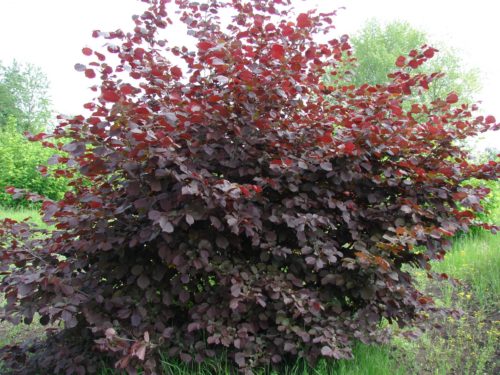
Easy landing and growing made a hazelnut available for country or garden sites. Among cultural plants that are grown as food, the hazelnuk took one of the leading places. This is due to the high nutability of its fruit, ease of agrotechnology, unpretentious to soil-climatic conditions and other useful qualities.
Hazelnut, photo
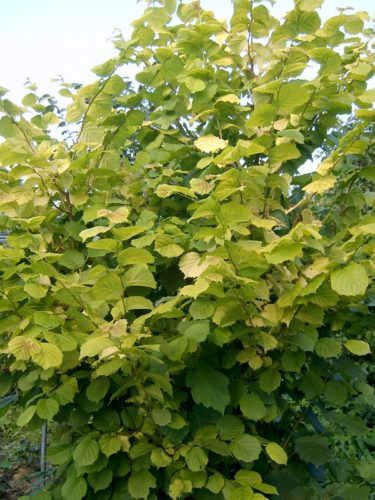

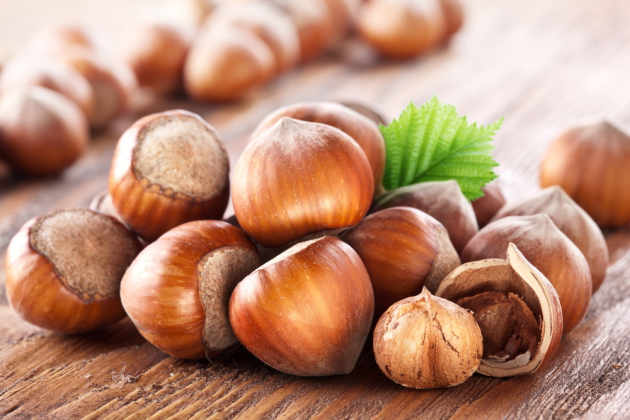
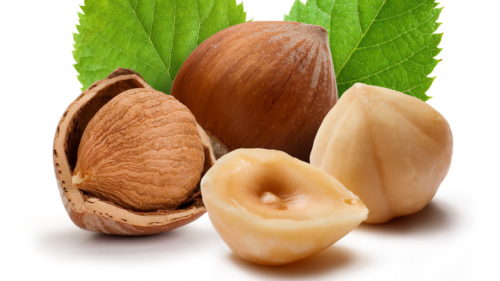
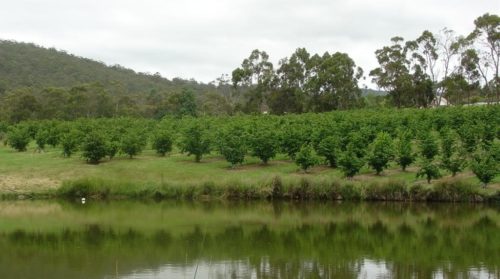
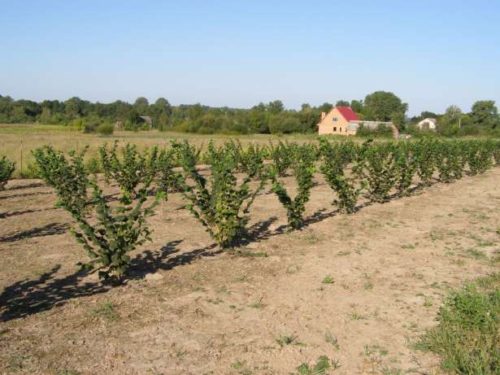

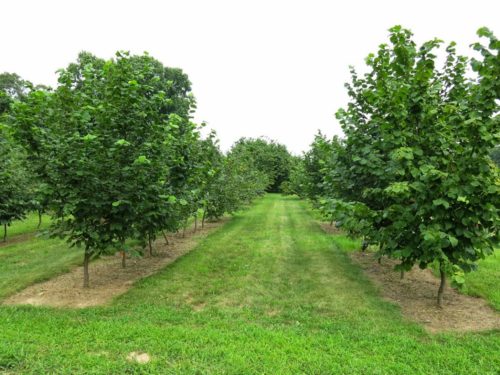
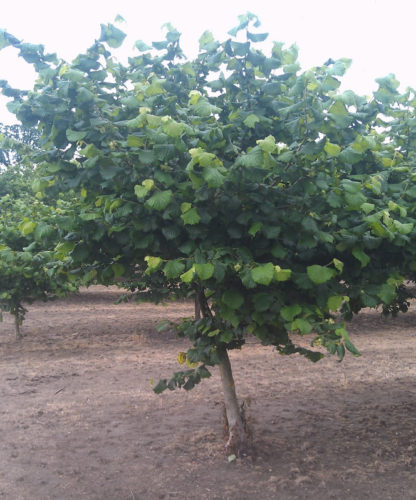
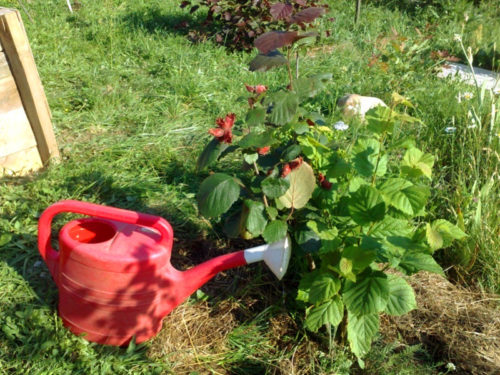
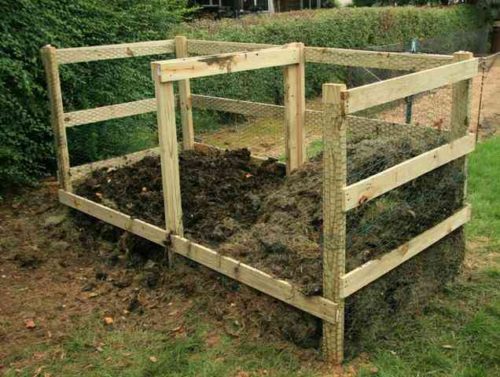

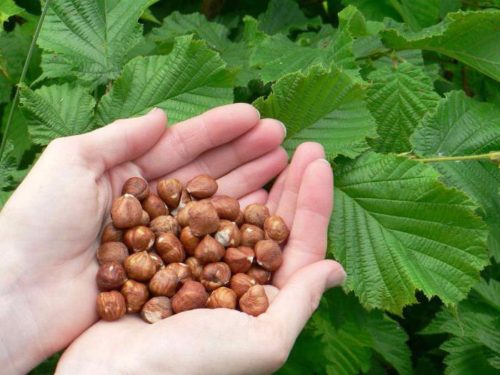
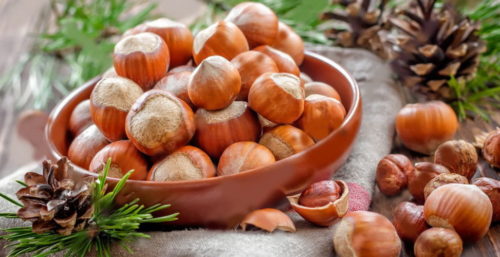
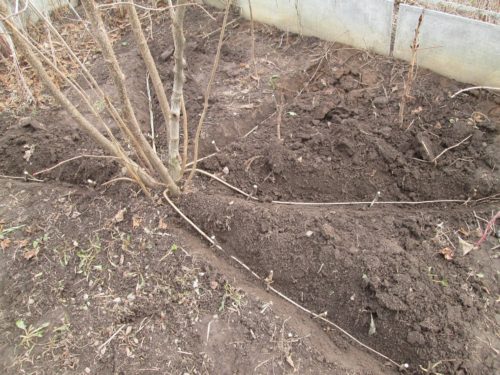
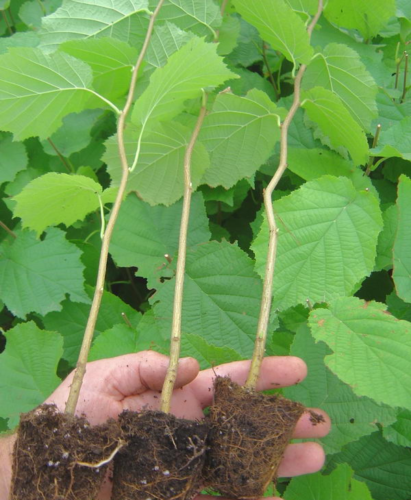
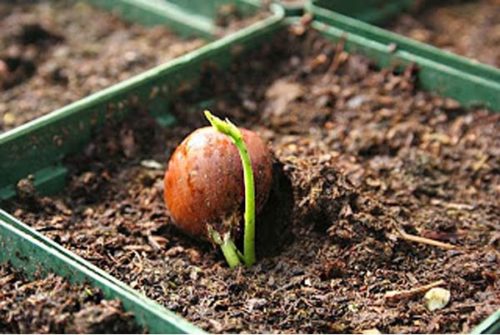
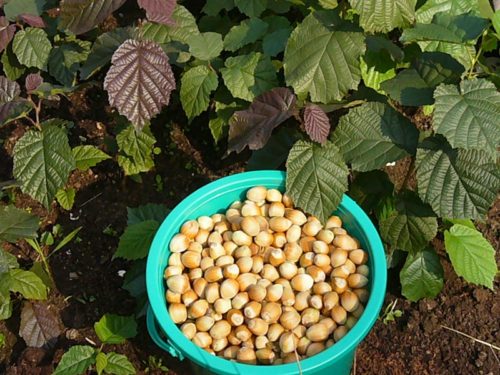
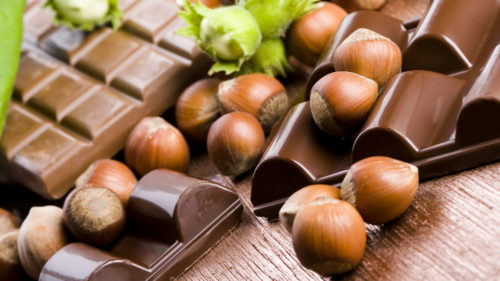
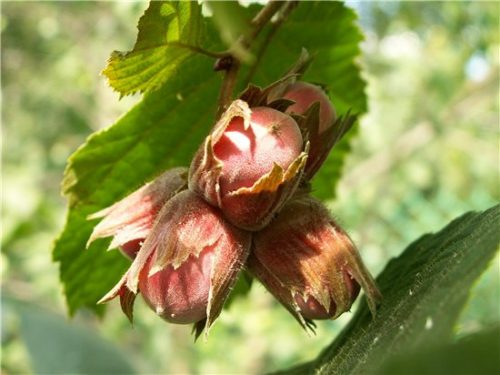
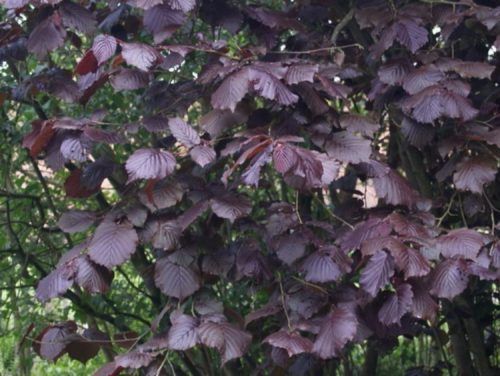
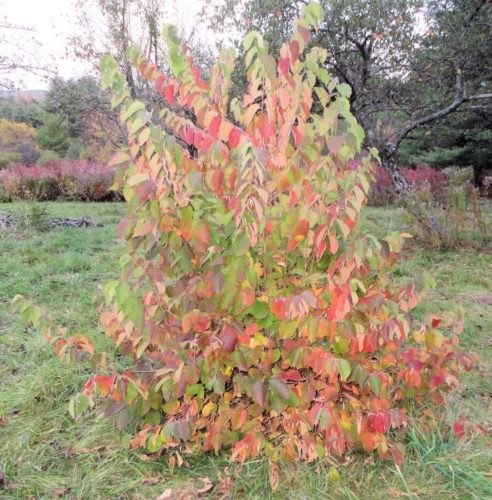
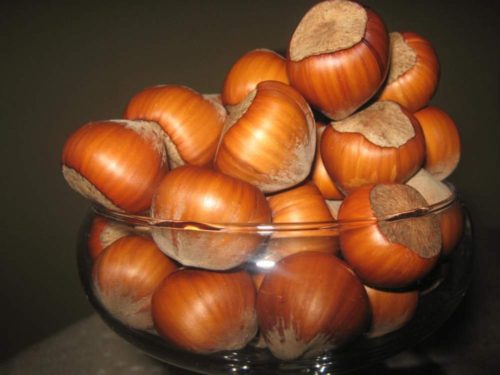

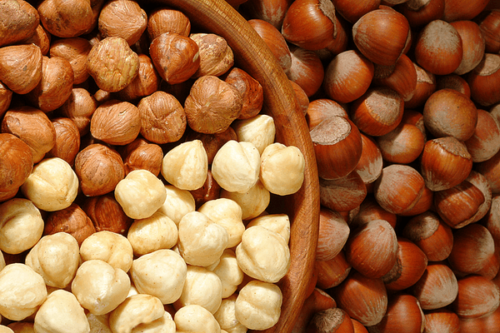












 Start a discussion ...
Start a discussion ...